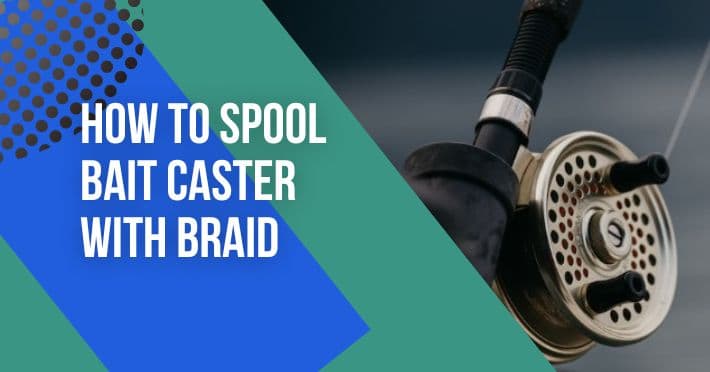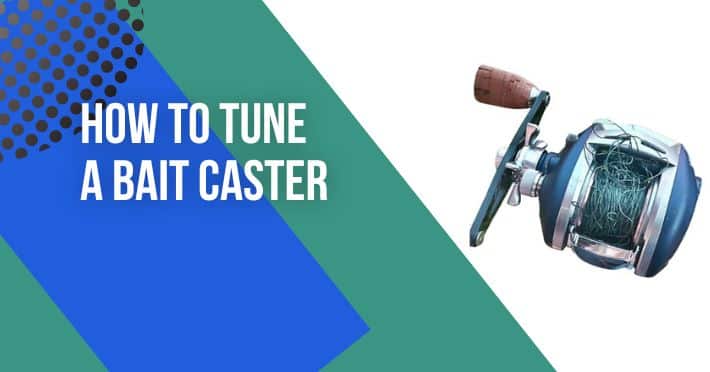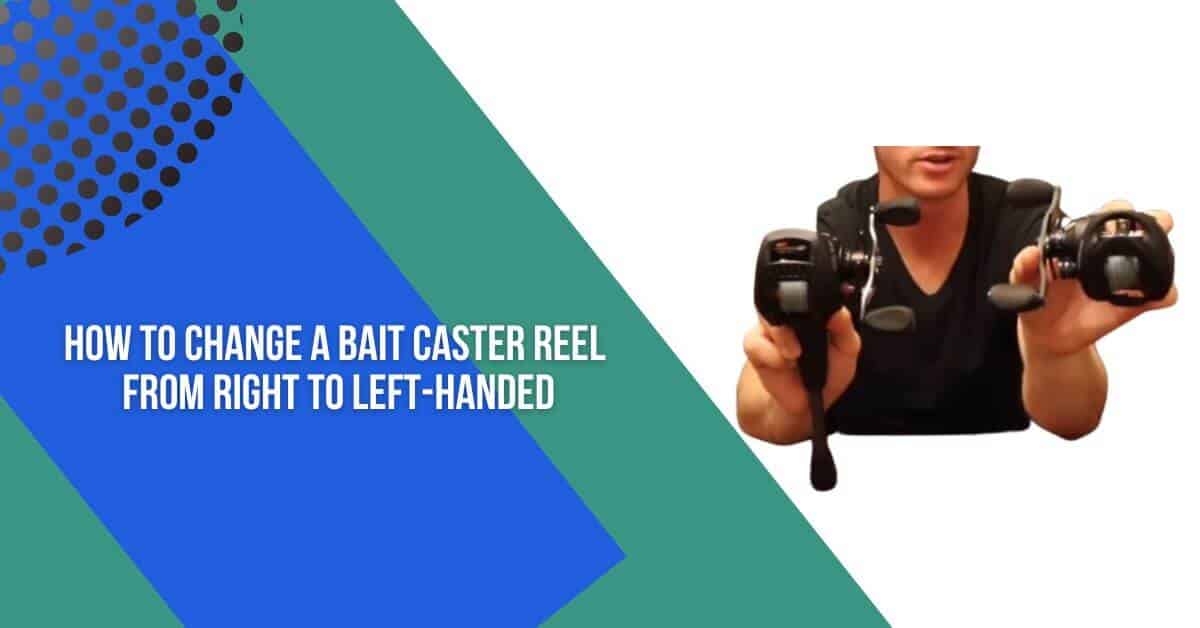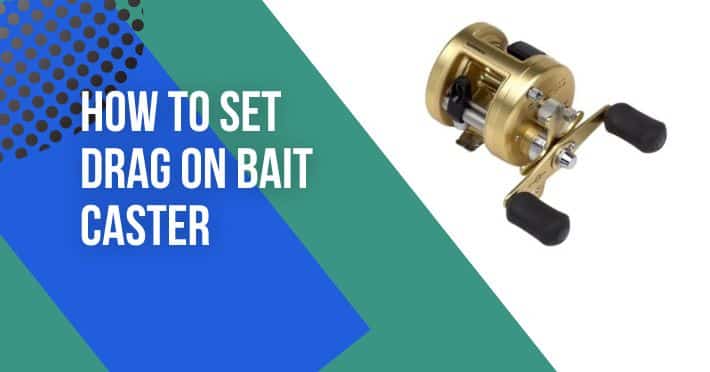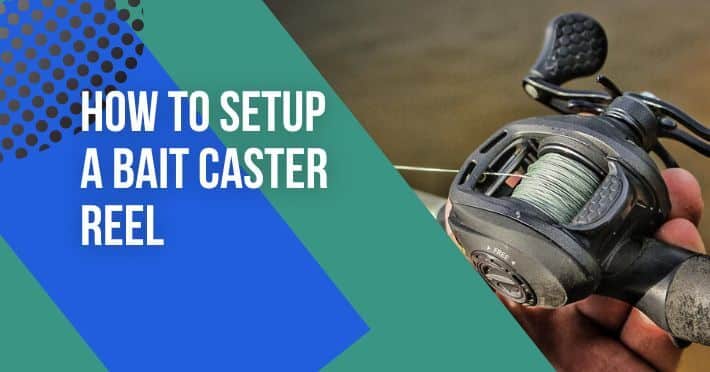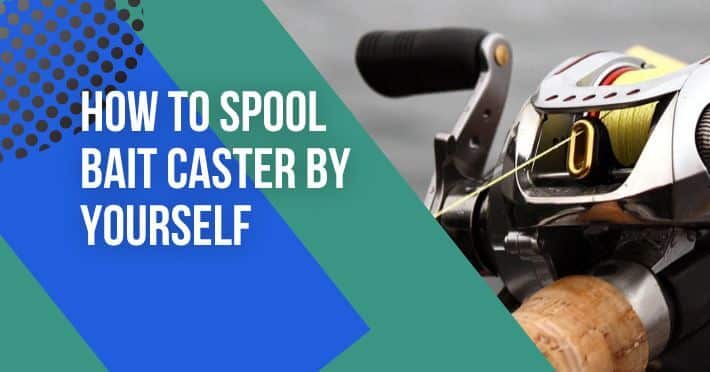Contents
- 1 How To Spool A Bait Caster With Braid
- 2 Gather Your Materials:
- 3 Braid
- 4 Bait Caster Reel
- 5 Line Clipper
- 6 Ruler
- 7 Scissors
- 8 Bait Casting Rod
- 9 Line Spooling Tool
- 10 Tape
- 11 Pliers
- 12 Bucket or Container
- 13 Soak The Braid:
- 14 Attach The Spooling Tool
- 15 Set The Drag
- 16 Start Spooling
- 17 How do you tie a braided line to a bait caster?
- 18 Make An Overhand Knot
- 19 Pass The Tag End Through The Loop
- 20 Pull The Knot Tight
- 21 Attach The Knot To The Spool
- 22 Trim The Tag End
- 23 Test The Knot
- 24 Frequently Asked Questions!!
- 25 Should you use a braided line on a bait caster?
- 26 Do you need a mono backing for a braided line on a bait caster?
- 27 Is braid or mono better for bait casters?
To spool a bait caster with a braid, can be a daunting task for those who are new to fishing. Braid is a popular fishing line among anglers as it provides strength, sensitivity, and low stretch. However, spooling a bait caster with a braid can be a little tricky compared to mono-filament or fluorocarbon lines.
To get the best performance from your bait caster and to know more about how to spool a bait caster with a braid, it’s essential to spool the line correctly.
In this guide, we will cover all the steps you need to take to spool a bait caster with a braid properly, so you can focus on landing the big one.
Fishermen own the fish they catch, but they do not own the ocean.
Etienne Schneider
How To Spool A Bait Caster With Braid
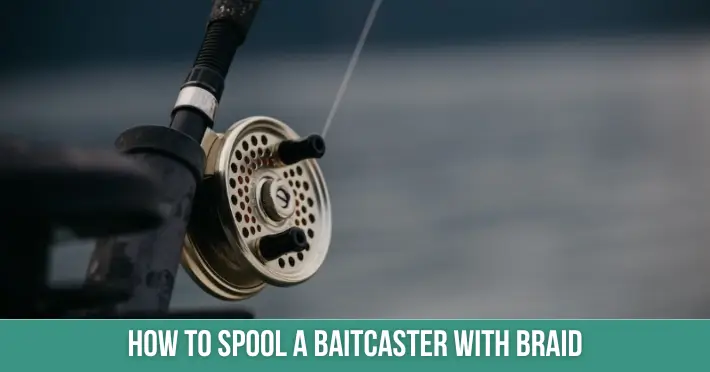
To Spool bait casting with a braid line can be a bit tricky, but with a few simple steps, you can get it done quickly and efficiently. Here is a step-by-step guide on how to spool a bait caster with braid;
Gather Your Materials:
According to expert’s choice anglers require these materials to spool a bait caster with braid;
Braid
You will need a spool of braid fishing line in the desired length and strength.
Bait Caster Reel
You will need a bait caster reel that you will spool the braid onto.
Line Clipper
A line clipper will be useful in cutting the braid to the desired length.
Ruler
A ruler will help you measure the braid and ensure the correct length for the reel.
Scissors
A pair of scissors will be needed to cut the end of the braid and make it ready for spooling.
Bait Casting Rod
A bait casting rod will help you determine how many lines you need to spool on the reel.
Line Spooling Tool
The A-line spooling tool can make spooling the braid much easier and faster.
Tape
A small piece of tape can be used to secure the end of the braid to the spool while spooling.
Pliers
A pair of pliers can be used to tighten the drag on the reel to ensure that the line is evenly spooled.
Bucket or Container
A bucket or container can be used to keep the spool of the braid in place while you are spooling the line.
Soak The Braid:
Soak the braided line in a bucket of water for 10-15 minutes. This will help prevent the cable from tangling when you spool it.
Soaking the braid on a spool of a bait caster is a crucial step in ensuring that the braid is correctly loaded onto the spool and that there are no line twists or tangles when casting.
By following these steps, you can ensure that your braid is correctly loaded onto the spool and ready for use. Here are the steps to follow to know how to spool a bait caster with braid:
- Fill a container with water and add a small amount of conditioner or line lubricant to the water.
- Unspool the braid from the original packaging and place it in the water to soak for 10-15 minutes.
- After soaking, drain the water from the container and gently squeeze the braid to remove any excess water.
- Take the braid and lay it flat on a clean surface, such as a table or floor.
- Begin spooling the braid onto the bait caster, ensuring that the braid is evenly distributed on the spool.
- As you spool the braid, use your thumb to gently apply pressure to the line, preventing any line twists or tangles.
- Once the spool is fully loaded, tie a knot at the end of the braid to secure it in place.
- Test the braid for any line twists or tangles by giving the line a light tug. If twists or tangles exist, unspool the braid and repeat the soaking and spooling process.
Attach The Spooling Tool
If you use a spooling tool, attach it to the end of your braided line and secure it to spool a bait caster with braid. If you don’t have a spooling tool, you can use an empty spool.
Choose the spooling tool: Select a spooling tool that is compatible with your bait caster and the type of braid you are using.
- Attach the spooling tool: Secure the spooling tool to the bait caster by screwing it into the spool post.
- Load the braid onto the spooling tool: Cut the length of the braid and place it onto the spooling tool spool.
- Tension the braid: Use the tension control knob on the spooling tool to tighten the braid to the desired level.
- Start spooling: Turn the handle on the spooling tool to start winding the braid onto the bait caster. Ensure that the braid is spooling evenly and that there is no tangling.
- Stop spooling: Once you have reached the desired amount of braid on the spool, stop spooling and remove the spooling tool.
- Finish spooling: Tie a knot on the end of the braid to secure it to the spool. Use a small piece of electrical tape to cover the knot and prevent it from slipping.
- Test the line: Check the line for any tangles or knots before you head out on the water.
Set The Drag
Turn the drag knob to the lowest setting on your baitcasting reel to spool a bait caster with braid. This will allow you to spool the line onto the reel smoothly. Setting the drag on a bait caster with a braid is an important step to ensure proper spooling and to prevent line twists and tangles.
Gather your gear which you will need your bait caster, braid line, and a scale to weigh the line.
Now, prepare the braid line, cut a length of braid line that is slightly longer than the spool on your bait caster. Make sure the end of the line is clean and even, with no knots or tangles.
Then, load the braid line, hold the end of the line, and place the spool on the ground. With your free hand, feed the line onto the spool, making sure it is evenly distributed.
Furthermore, set the drag and turn the drag knob on your bait caster until it is tight enough to prevent the braid line from slipping, but not so tight that it is difficult to turn the spool.
Now, to spool a bait caster with braid, test the drag and hold the end of the line and gently pull on the braid. The line should come out smoothly, without slipping or tangling. If the line slips or tangles, adjust the drag accordingly.
Weigh the braid line on a scale and make note of the weight. This information will be helpful when you are fishing, as you can adjust the drag to match the weight of your lure.
Secure the line and once the drag is set, secure the end of the line to the spool using a line clip or a rubber band. This will prevent the line from slipping or tangling during transport.
By following these steps, you can ensure that your bait caster with braid will spool properly, without any twists or tangles, and that you can adjust the drag to match the weight of your lure for a successful fishing trip.
Start Spooling
Start spooling the line onto the reel and applying even pressure. Start by spooling the line onto the empty spool or spooling tool. Make sure the line is spooled evenly and that there are no tangles or twists.
- Determine The Number Of Lines You Need: To determine how many lines you need, measure the circumference of your spool and multiply it by the desired line depth.
- Attach The Braid To The Spool: Tie a simple knot to the end of the braid and attach it to the spool. You can use a “double uni” knot or a “nail knot” for this.
- Load The Braid: Start spooling the braid onto the reel. You can spool by hand or use a line spooler to make the process easier. Ensure that the braid is spooled in an even and tight manner.
How do you tie a braided line to a bait caster?
By using the following steps you can tie a braided line to a bait caster.
Make An Overhand Knot
Make an overhand knot by placing the loop of the braided line over the top of the spool.
Pass The Tag End Through The Loop
Take the tag end of the braided line and pass it through the loop created in step 2.
Pull The Knot Tight
Hold the loop and tag the end of the braided line and pull the knot tight.
Attach The Knot To The Spool
Place the knot over the spool and hold it in place.
Trim The Tag End
Once the line is tightly secured onto the spool, cut the tag end of the braided line close to the knot.
Test The Knot
Check the knot for any signs of slipping or looseness by applying light tension to the line. If the knot is secure, it’s ready to use.
Conclusion
In conclusion, to spool a bait caster with a braid is a simple and straightforward process that can greatly enhance your fishing experience.
With the right tools and techniques, you can easily fill your bait caster with a braid, ensuring that your line is neat, tangle-free, and ready to handle any catch that comes your way.
By following the steps outlined in this article, you’ll be able to know about how to spool a bait caster with braid & make the most of your braid, and tackle any fishing situation with confidence. So, go ahead and give it a try – you’ll be glad you did!
Frequently Asked Questions!!
Should you use a braided line on a bait caster?
Yes, you can use a braided line on a bait caster. In fact, many anglers prefer using the braided line on a bait caster because it provides excellent sensitivity, low stretch, and high strength.
However, it can be challenging to cast with a braided line as it has a tendency to tangle, so it requires proper setup and technique to use effectively. If you are new to using braided lines, it may take some time to get used to casting it, but with practice, you will get the hang of it.
Do you need a mono backing for a braided line on a bait caster?
Generally, a mono backing is not necessary for a braided line on a baitcaster. The braided line is strong and does not stretch, so it is not necessary to use a mono backing.
However, some anglers do use a mono backing for added security, as the braided line can be prone to slipping off the spool or breaking off if there is not enough friction to keep it in position.
Is braid or mono better for bait casters?
It is generally accepted that a braided line is better for bait casters. This is because the braided line is more sensitive, has a smaller diameter, and provides a stronger and more direct connection to the fish.
This makes it easier to detect bites, set the hook, and feel the fight of the fish. On the other hand, the mono filament line tends to stretch more, which can cause some anglers to miss bites or have difficulty fighting larger fish.
Additionally, mono filament lines can also become easily tangled or kinked, which can negatively impact casting performance.

